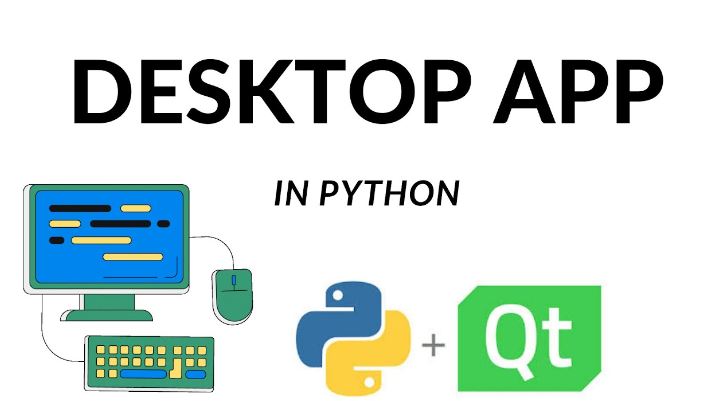Greetings, my fellow coders! Are you ready to dive into the world of desktop app development using the mighty Python? I’m here to share the best practices that will empower you to create efficient, user-friendly, and robust desktop applications. So grab your keyboard and let’s get started!
Python has emerged as a popular choice for desktop app development due to its ease of use, extensive libraries, and cross-platform compatibility. However, to truly master the art of desktop app development in Python, it’s essential to follow certain best practices.

Design Principles
KISS: Keep It Simple, Silly
Strive for simplicity in your code. Avoid unnecessary complexity and convoluted designs. Break down complex tasks into smaller, manageable chunks. A KISS approach ensures readability, maintainability, and reduced bugs.
DRY: Don’t Repeat Yourself
Eliminate code duplication. Utilize functions, classes, and modules to reuse code where possible. DRY saves time, minimizes errors, and simplifies future modifications. Embrace the power of Python’s object-oriented features to promote code reusability.
Data Handling
Handle Data Types Carefully
Treat data types with the utmost respect. Use type hints to ensure data integrity. Avoid mixing different data types in operations, as this can lead to unexpected results and errors. Python’s strong typing system provides a safety net, but it’s your responsibility to utilize it effectively.
Utilize Data Validation
Always validate user input. Never assume that the data you receive is accurate or complete. Use appropriate data validation techniques to verify the format, range, and constraints of input data. This prevents exceptions and ensures the reliability of your program.
User Experience
Prioritize User Interface (UI) Design
Your application’s UI is the gateway to user satisfaction. Employ intuitive navigation, clear labeling, and a visually appealing design. Utilize Python’s PyQt or Tkinter libraries to create visually stunning and user-friendly interfaces.
Handle Events Efficiently
Event handling is crucial for a responsive and interactive UI. Use event listeners to capture user actions such as button clicks, mouse movements, and keyboard input. Handle events promptly and efficiently to provide a smooth and seamless user experience.
Testing and Deployment
Unit Testing: A Cornerstone of Quality
Rigorously test your code to prevent bugs and ensure reliability. Employ unit testing frameworks like unittest or pytest to isolate and test individual functions, classes, and modules. Unit testing fosters confidence in your code and reduces the risk of production errors.
Automated Deployment: Streamline Your Workflow
Automate your deployment process to simplify updates and minimize downtime. Utilize tools like Python’s setup.py or Poetry for packaging and distributing your applications. Automated deployment streamlines the release process, saving you time and effort.
Table of Essential Best Practices
| Best Practice | Description |
|---|---|
| KISS | Keep code simple and avoid unnecessary complexity |
| DRY | Eliminate code duplication through reuse and modularity |
| Type Checking | Enforce data type integrity to prevent errors |
| Data Validation | Verify user input to ensure accuracy and reliability |
| Intuitive UI Design | Create user-friendly interfaces with clear navigation and labeling |
| Efficient Event Handling | Handle user actions promptly and efficiently for a seamless experience |
| Unit Testing | Test individual code components to ensure quality and reliability |
| Automated Deployment | Streamline application updates and minimize downtime |
Conclusion
There you have it, my fellow coders! By following these best practices, you’ll elevate your Python desktop app development skills to new heights. Remember, simplicity, data integrity, user satisfaction, and robust testing are the keys to creating exceptional desktop applications.
Check out our other articles for more tips and tricks on developing desktop apps with Python. Stay tuned for upcoming posts on advanced topics and industry trends. Keep coding, keep learning, and keep embracing the power of Python!
FAQ about Best Practices for Developing Desktop Apps in Python
How do I structure my Python desktop app?
Organize your app’s code into clear modules or classes for logical separation of functionality. Use object-oriented programming principles.
What GUI frameworks are popular for Python desktop apps?
PyQt, PySide, Kivy, and tkinter are commonly used GUI frameworks that provide cross-platform compatibility and ease of use.
What are the key considerations for designing a GUI for a desktop app?
Prioritize user experience and aesthetics. Consider the target audience and create intuitive interfaces with clear navigation and feedback.
How do I handle user input and events in Python desktop apps?
Use event-driven programming where actions such as button clicks or window resizing trigger predefined callbacks in your code.
How can I ensure my desktop app’s compatibility across multiple platforms?
Utilize cross-platform GUI frameworks like PyQt or PySide that abstract platform-specific differences. Test your app on different OSes.
What techniques can I use to optimize the performance of my desktop app?
Profile your code to identify performance bottlenecks. Optimize algorithms, reduce memory usage, and consider using multithreading.
How can I implement persistence in my Python desktop app?
Store user data in files, databases, or object serialization. Use libraries like SQLite, SQLAlchemy, or pickle for data management.
What are best practices for memory management in Python desktop apps?
Use the garbage collector efficiently. Avoid circular references and memory leaks. Monitor memory usage and consider using a memory profiler.
How do I handle errors and exceptions in Python desktop apps?
Implement error handling mechanisms using try-except blocks. Log errors for debugging purposes. Provide user-friendly error messages.
What tools can I use for testing and debugging Python desktop apps?
Use unit testing frameworks like unittest or pytest. Utilize debugging tools like pdb or PyCharm’s built-in debugger. Monitor logs for runtime errors.
